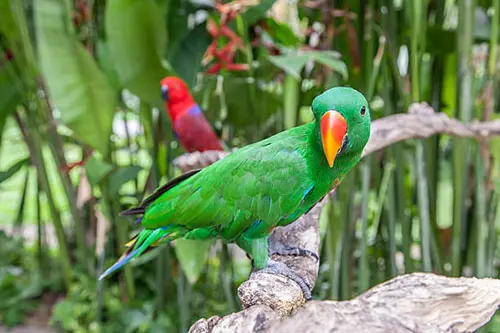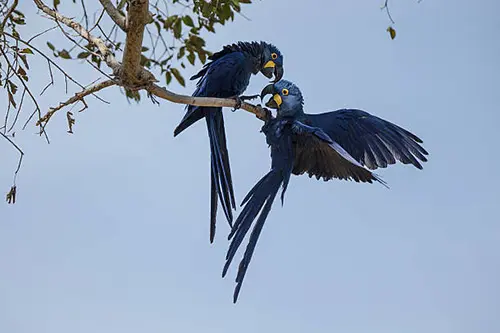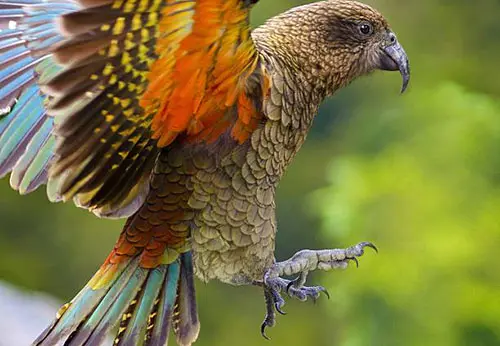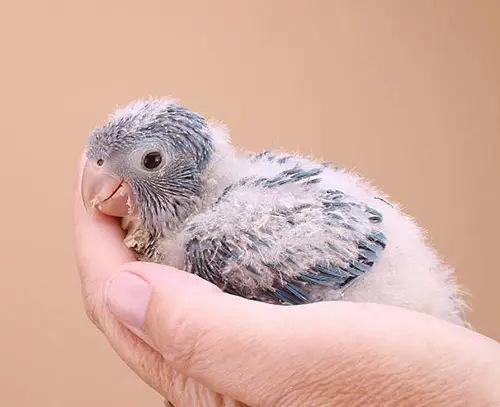A Feathered Friend with the Funniest Mealtime Trick
How they deftly manipulate their food is unlike any other bird in the animal kingdom. And they show one eating characteristic that's similar to you and me. But that's not their only claim to fame. Find out about these fascinating birds today.

STORY AT-A-GLANCE
- There are many species of parrots, but they all have two things in common: a curved beak and zygodactyl feet
- The largest species of parrot can weigh as much as the average adult housecat
- A third of the world’s parrot species are endangered, including the kakapo and Australia’s orange-bellied parrot
- Many parrots are omnivores and eat everything from seeds and nuts, to insects, to meat
- Larger species like macaws and cockatoos typically live from 35 to 50 years
Editor's Note: This article is a reprint. It was originally published March 4, 2016.
Parrots are members of the order Psittaciformes, which includes over 350 bird species including:
- Parakeets
- Macaws
- Cockatiels
- Cockatoos
There are many types of parrots, but they all have a few things in common, including a curved beak and zygodactyl feet, which means four toes on each foot, two of which point forward, and two backward. Here are 10 more facts about the amazing parrot.
10 Fascinating Facts About Parrots
- Males and females of most parrot species look exactly alike — For most species of parrot, it takes an expert eye — and often a lab test — to determine the sex. An exception to this rule are male and female Solomon Island eclectus parrots, who are so different looking that for many years they were thought to be different species of birds!
The males are a vivid emerald green with flame-colored beaks; the females are crimson and royal blue, with black beaks and bright scarlet heads.
 Male Solomon Island eclectus in foreground; female in background
Male Solomon Island eclectus in foreground; female in background - A third of the world’s population of parrots are endangered — Habitat destruction and poaching for the pet trade have placed many parrots on the IUCN Red List of Threatened Species. In fact, a study reported that logging has reduced the population of African grey parrots in Ghana by 99%.1
Among the most endangered parrots are the kakapo, with less than 150 in existence, and the orange-bellied parrot of Australia, with fewer than 50 remaining. - The largest parrot species can weigh as much as a housecat — Parrots come in a wide range of shapes and sizes. There’s the teeny tiny buff-faced pygmy, who weighs just one ounce and is the size of an adult human finger.
At the other end of the spectrum is the gorgeous hyacinth macaw, which is the longest parrot on earth at nearly 3.5 feet from beak to tail.
 Hyacinth macaw
Hyacinth macaw
And then there’s the large-and-in-charge kakapo, a flightless New Zealand parrot. Adult male kakapos can weigh up to 9 pounds — the average weight of an adult cat. - Parrot feathers contain natural antibacterial agents — The brilliantly colored feathers on parrots come equipped with a bacteria-resistant pigment called Psittacofulvins. It’s a pigment only parrots produce, and it gives feathers their colorful hues. Even better, when exposed to damaging bacteria, the pigments help prevent degradation of the feathers.
- The black palm cockatoo is the “Panda of Parrots” — This handsome bird is native to the rainforests of the South Pacific, and has real problems in the reproduction department. Not only do captive black palm cockatoos have trouble successfully rearing chicks, but so do wild mating pairs.
Experts aren’t sure why this parrot species has reproductive difficulties, however, it may be linked to their photosensitive skin, which reacts to natural sunlight. - Many parrots are long-lived — Larger species of parrots, for example, macaws and cockatoos, typically live from 35 to 50 years. An African grey named Tarbu lived to be 55, and currently the oldest living parrot is a Major Mitchell cockatoo named Cookie, who lives at Chicago’s Brookfield Zoo. Cookie is 82 years young!
- Not all parrots favor tropical locales — The vast majority of parrot species live in tropical and subtropical regions of Central and South America, Africa, Asia, and Australia. However, the endangered maroon-fronted parrot lives high in the Sierra Madre Oriental Mountains of Mexico. And the New Zealand kea parrot lives in alpine regions and nests in ground burrows.
 New Zealand kea
New Zealand kea - Parrots are social creatures — Most parrots like company and live in flocks. In fact, African greys are known to live in flocks of as many as 20 to 30 birds. Many species of parrots mate for life, and the mated pair works as a team to raise their young. Parrots communicate with others in the flock with vocalizations and by shaking their tail feathers.
- Parrots typically lay 2 to 8 eggs at one time — The eggs incubate from 18 to 30 days while the parents take turns sitting on them. Parrot chicks are born with just a thin layer of fine feathers called down. The chicks are blind for the first 2 weeks of their lives. At 3 weeks, their adult feathers begin to come in. Chicks don’t reach full maturity until they are 1 to 4 years old, depending on the species.
 Quaker parrot chick
Quaker parrot chick - Parrots are the only birds that can eat with their feet — Most species of parrots are able to use their feet to manipulate food into their mouths, much like the way humans use their hands. A study of Australian parrots even showed that the birds had a definite “left-footed” or “right-footed” preference when it came to picking up food!2
Many parrots are omnivores and eat everything from seeds and nuts, to insects, to meat. Believe it or not, New Zealand kea parrots were actually observed attacking and killing sheep back in the mid-1800s!











